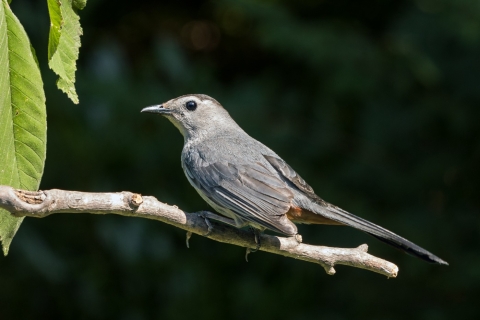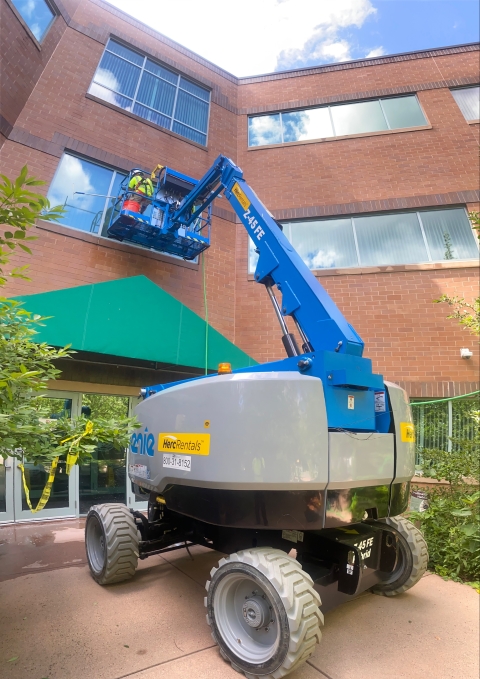HADLEY, MA – The federal agency charged with safeguarding birds and other wildlife is leading by example in Massachusetts by making its own office building more bird-friendly.
This month the U.S. Fish and Wildlife Service is installing bird collision prevention materials at the agency’s Northeast Regional Office in Hadley, Massachusetts.
Every year nearly one billion birds collide with glass in the United States. Glass windows are dangerous to birds because they reflect their surrounding environment – like forest, clouds or sky. Birds, unable to recognize the surface as a barrier, see natural habitat mirrored in the reflection and fly directly into the glass.
After collisions, some birds may be only temporarily stunned and without lasting injury — but often they are not so lucky. In many of these cases, birds suffer internal hemorrhages, concussions, or damage to their bills, wings, eyes, or skulls. While they may be able to fly temporarily, birds with even moderate injuries are much more vulnerable to predators and other environmental dangers.
In many instances, however, birds are killed immediately and never fly away.
“Birds are wonders of nature. They are not only part of a healthy environment, but their songs and presence provide a sense of calm to people,” says Pam Toschik, who directs the Service’s Migratory Bird program in the Northeast. “Today birds face serious declines across the globe. Understanding why birds collide with structures can lead to effective solutions for reducing the risk of collisions.”
Toschik says the Service is doing just that. This week and next, a team of trained Service maintenance professionals will install products specifically designed to prevent these dangerous collisions. The product, a pattern of markings spaced two inches apart, helps to break up surface reflections on windows while maintaining a low visual impact on people.
Lights attract birds at night, drawing them in to buildings and towers and increasing collisions. The Service worked with the building owner to reprogram the building lights to turn off when the building is not occupied to further reduce the risk of bird collisions at our building.
Since 1970, nearly three billion birds — more than one in four – have been lost in North America. While there are numerous causes of this decline, collisions are a major contributor. Reducing bird collisions is a part of the Service’s partnership on the Three Billion Birds initiative, a concentrated effort to conserve and restore healthy bird populations across the hemisphere.
While tall glass skyscrapers are responsible for some of these bird fatalities, most bird collisions occur less than 20 feet from ground level, including at homes and on low-rise buildings.
Fortunately, there are efficient and inexpensive ways to make your building safer for birds. Some bird safety measures even reduce energy costs and look nice. In addition to applying tape patterns or film, homeowners can paint decorative designs with tempera paint on a window’s exterior, install insect screens, or hang paracord zen curtains. Turning your exterior lights off and closing your window shades at night in your home and office can also help reduce collisions and save electricity. You can find out where birds are most prone to collisions by checking windows for vegetation reflection, searching for dead birds, or finding feather prints on windows. Learn more about window collisions and the Service’s efforts to prevent them.




